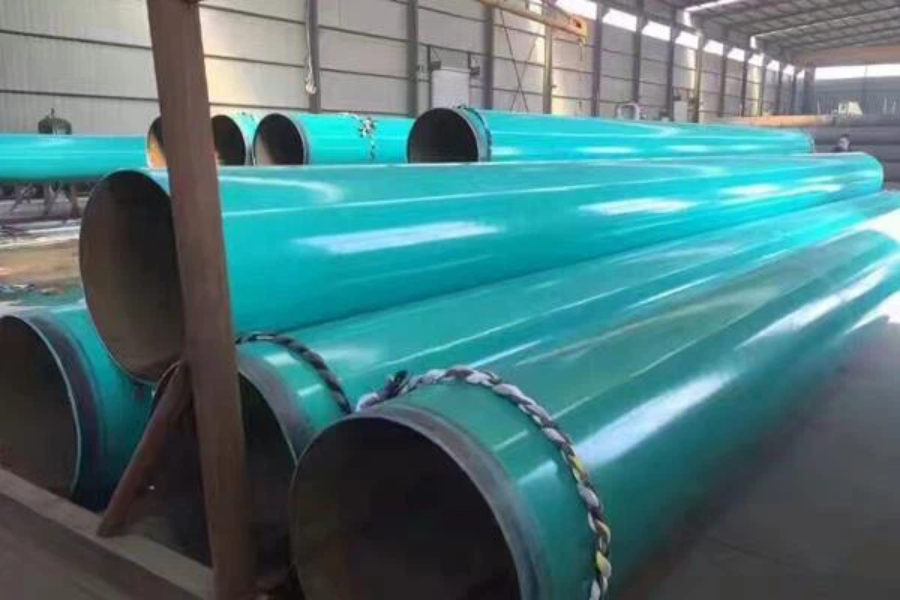Polyurea Pipe Coatings: An In-Depth Guide to Long-Lasting Protection and Durability
Industrial piping systems face intense wear from corrosion, chemical exposure, and abrasion. Polyurea pipe coatings have transformed the industry by offering highly durable and resilient protection, significantly extending the life of pipes used in sectors like oil and gas, water treatment, and manufacturing.
In this guide, we’ll explore the characteristics, benefits, applications, and environmental advantages of polyurea pipe coatings, as well as key considerations for their application.
What Are Polyurea Pipe Coatings?
Polyurea pipe coatings are specialized protective layers applied to the surfaces of pipes to guard against corrosion, abrasion, and chemical exposure.
Made from an elastomeric polymer that cures quickly, polyurea coatings form a strong, flexible barrier on the pipe’s surface, helping preserve structural integrity and prevent degradation over time. This rapid-curing feature is beneficial for industries where minimizing downtime is crucial.
The Composition of Polyurea Pipe Coatings
Polyurea coatings result from a fast chemical reaction between an isocyanate compound and a resin blend. Once sprayed onto a surface, these components rapidly react, creating a durable, flexible, waterproof layer that tightly adheres to the pipe. Polyurea’s quick curing process requires minimal downtime, allowing industries to expedite maintenance or construction timelines efficiently.
Key Benefits of Polyurea Pipe Coatings
The popularity of polyurea pipe coatings is rooted in their many advantages over traditional protective coatings. Below are the primary benefits:
Durability
One of the most remarkable attributes of polyurea coatings is their durability. These coatings are highly resistant to a range of environmental factors like UV radiation, water, and chemicals, ensuring that pipes remain operational and free from structural damage for years. This robustness makes polyurea an excellent choice for pipelines that are exposed to intense environmental conditions.
Chemical Resistance
Polyurea coatings offer exceptional resistance to many chemicals, including acids, alkalis, and solvents. This makes them particularly well-suited for industries like chemical manufacturing, where pipelines frequently encounter corrosive materials.
Fast Curing Time
Unlike many coatings that require hours to cure, polyurea hardens within minutes. This rapid curing feature allows for reduced downtime, an essential factor in industries that depend on continuous production and operation.
Flexibility
Despite its durability, polyurea remains flexible. This allows it to expand and contract with the pipe as temperatures fluctuate, preserving adhesion and preventing cracks or separation. Such flexibility is especially important in climates where pipes experience regular thermal expansion and contraction.
Abrasion Resistance
Industrial settings often expose pipes to physical wear from constant use and mechanical impact. Polyurea’s resistance to abrasion shields pipes in these environments, providing a reliable defense against long-term damage and reducing the frequency of repairs or replacements.
Application Process of Polyurea Pipe Coatings
The process of applying polyurea pipe coatings is straightforward but requires precision to ensure uniform coverage. Typically, the application involves several key steps:
- Surface Preparation: Properly preparing the pipe surface is crucial to successful coating adhesion. This step may include removing old coatings, rust, or debris to create a clean surface.
- Priming: In some cases, a primer is applied to enhance the bonding between the polyurea and the pipe’s surface. This additional step improves the coating’s longevity by strengthening adhesion.
- Spraying the Polyurea: Using a high-pressure spray system, the polyurea mixture is applied evenly across the pipe’s surface, creating a uniform protective layer. This technique ensures optimal protection, as it coats the entire surface without any weak spots.
- Curing: Polyurea begins curing almost immediately after application. Within seconds to minutes, the coating sets, allowing the pipe to be put back into service quickly and reducing operational disruptions.
Common Applications of Polyurea Pipe Coatings
Polyurea coatings are used across a wide range of industries, each benefiting from their specific protective qualities. Below are some of the most common applications:
Oil and Gas Industry
Pipelines in the oil and gas sector endure harsh conditions, such as exposure to corrosive materials, extreme temperatures, and significant mechanical stress. Polyurea coatings offer a reliable solution for preventing corrosion and degradation in these challenging environments.
Water Treatment Plants
In water treatment facilities, pipelines transport water and various chemicals, which can weaken untreated pipes. Polyurea’s chemical resistance makes it an ideal choice for water treatment applications, helping pipes remain leak-free and operational.
Manufacturing Facilities
Manufacturing plants often rely on pipelines to move materials, including chemicals and abrasives. Polyurea coatings protect these pipes from corrosion and wear, reducing downtime and maintenance costs associated with frequent repairs or replacements.
Marine and Offshore Structures
Pipes used in marine and offshore industries face constant exposure to saltwater, humidity, and harsh conditions. Polyurea coatings provide superior protection against salt corrosion and other damaging factors, making them ideal for pipelines on offshore rigs and marine structures.
The Environmental Impact of Polyurea Pipe Coatings
Beyond their protective benefits, polyurea coatings also support environmental sustainability. By extending the service life of pipelines, polyurea reduces the frequency of replacements, minimizing the need for new materials and resources. Additionally, polyurea is a low-VOC (volatile organic compound) material, meaning it releases minimal emissions during application, making it a more eco-friendly choice compared to traditional coatings.
Factors to Consider When Choosing Polyurea Pipe Coatings
When selecting polyurea for pipeline protection, it’s essential to consider several factors to ensure optimal performance:
- Pipe Material: Polyurea adheres well to surfaces like metal, concrete, and some plastics. However, certain materials may require primers or additional preparation steps for proper adhesion.
- Operational Environment: The specific conditions a pipeline faces—such as chemical exposure, temperature extremes, or mechanical stress—should guide the choice of coating. Polyurea’s adaptability makes it suitable for various settings, but some environments may require particular formulations.
- Budget: While polyurea coatings may have a higher initial cost than some alternatives, their durability and protective benefits often result in significant long-term savings, as they reduce maintenance needs and extend the life of pipes.
Conclusion
Polyurea pipe coatings offer a powerful solution for industries looking to safeguard their pipelines against corrosion, abrasion, and chemical damage. With their durability, flexibility, and quick curing time, polyurea coatings are gaining widespread popularity in applications ranging from oil and gas to water treatment.
These coatings not only provide cost-effective, long-lasting protection but also contribute to environmental sustainability by reducing the need for frequent pipeline replacements.
FAQs
What makes polyurea coatings different from other pipe coatings?
Polyurea coatings cure exceptionally quickly and offer superior flexibility, as well as high resistance to chemicals and abrasion, making them ideal for demanding industrial environments.
Can polyurea be applied to any type of pipe?
Polyurea can be applied to a variety of pipe materials, including metal, concrete, and certain plastics, although some surfaces may require specific preparation steps for optimal adhesion.
How long does polyurea coating last on pipes?
With proper application and maintenance, polyurea coatings can last for several decades, significantly extending the lifespan of pipelines.
Is polyurea environmentally friendly?
Yes, polyurea is a low-VOC material, meaning it releases fewer harmful emissions during application and contributes to sustainability by reducing the need for frequent replacements.
Can polyurea be applied in cold temperatures?
Polyurea can be applied across a broad range of temperatures, although cold conditions may necessitate specific formulations or extended curing times for optimal performance.
Explore trending topics and comprehensive analyses at Craze Radar.






